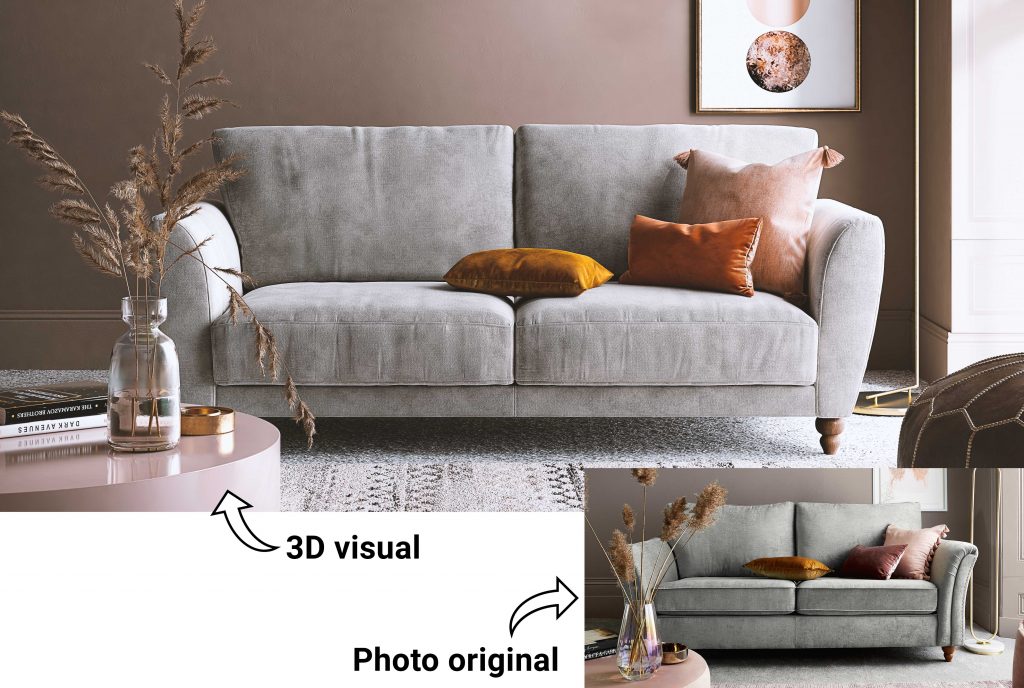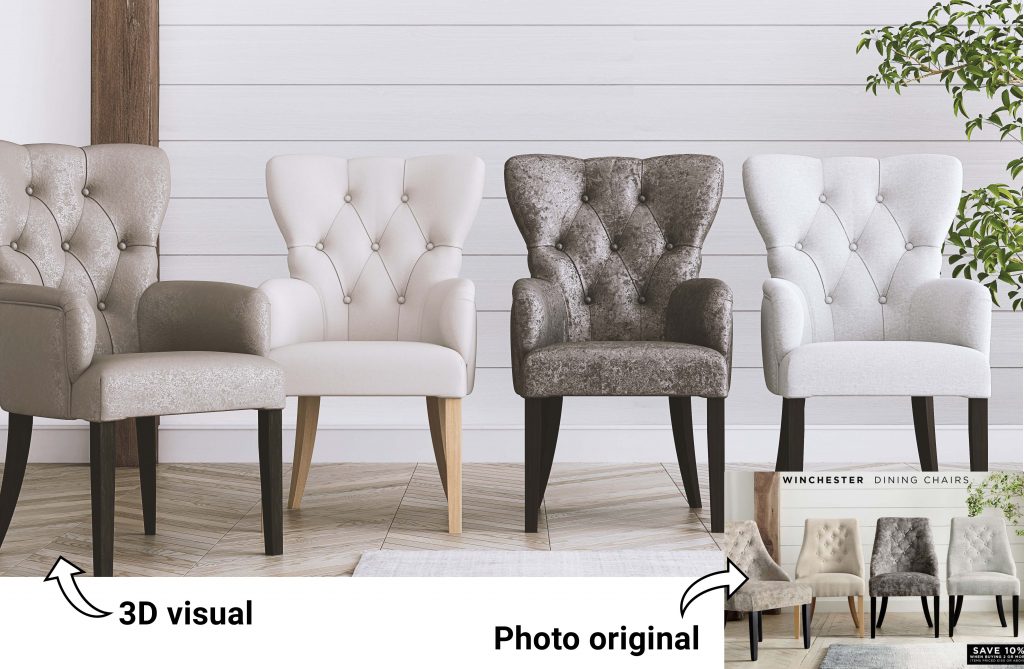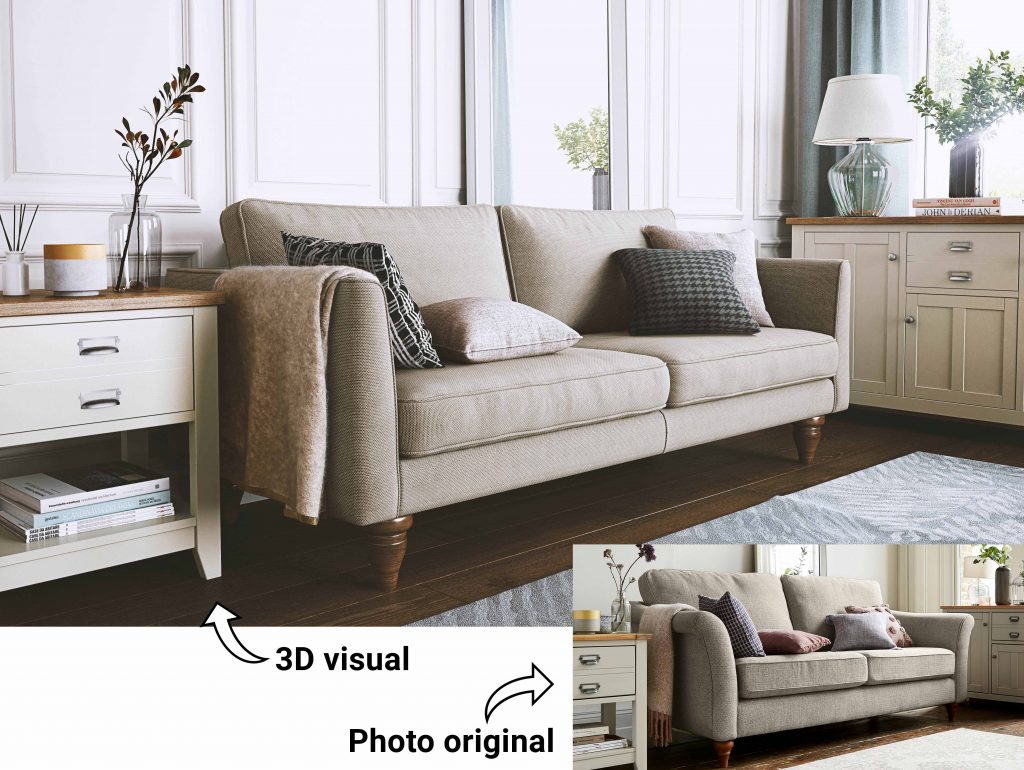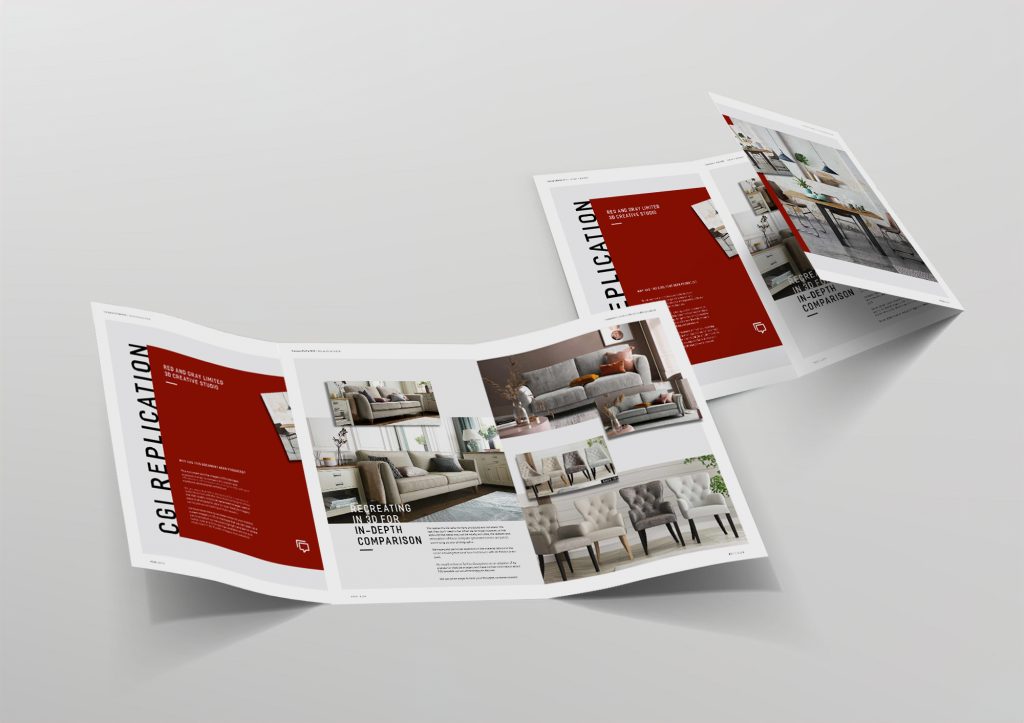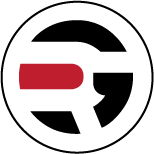Turning photo scenes to 3D CGI
We have been trying for a long time to become a preferred 3D visualisation supplier with Next Home UK and recently hit upon the idea of trying a new approach to get us noticed. All other avenues had been tried and all had failed so if we wanted to succeed with this company, we had to try something new.
After a brief 3D team meeting during which we discussed that words, telephone calls and emails were being ignored and were consistently failing we agreed that a visual impact had to be generated to explain very quickly what we could do with 3D product photography for this company.
What we did:
We determined that the best visual impact of the benefits of 3D visualisation could be generated when the subject involved the company’s own products and we therefore had our plan. We would pick a handful of existing photographs from the Next catalogue and recreate them using our 3D product visualisation techniques and form a small eye-catching explanatory leaflet to send to the marketing department. We hoped that CG photo-real recreations of their own product images would give them pause for thought and stop to consider what Red and Gray could do for them in the field of 3D visualisation.
We chose 4 separate images from across the Next Home website – being careful to pick images that would showcase our 3D skills and set about transforming them into 3D scenes. We knew that we couldn’t spend too long on the scenes as we were trying to recreate our standard 3D visualisation working practice for this test so we understood that the final 3D CGI would not be an exact match. What we were trying to achieve however was the same mood, feel and look of the original scenes without losing any of the realism and to remain inside the time frame we knew the budget for these types of scenes would allow.
The scenes we chose to replicate threw up many challenges in modelling, lighting and texture work but to illustrate our skill in providing 3D visualisations that would sit next to actual photography in the Next catalogue we had to rise to the challenge.
Issues we overcame:
The main issue we faced was making the scenes as realistic as the photos – if they looked CGI in any way then we would have failed. Each scene had its own separate challenges from lighting, modelling aspects to advanced texture work.
We could have spent many weeks on each scene refining and making the 3D version to exactly match the 3D version but we knew that was not an option so we had to decide what would match and what would be slightly different. Therefore there are some elements in all of the scenes that are similar but do not look exactly like the photo elements however they do retain the style and atmosphere of the photo.
The explanatory leaflet we designed and artworked laid out all of the 3D images with their real life counterparts so the team at Next could see what we had done. The text explained our aim and how we could expand this type of 3D visualisation across the different sectors of their operation.
The end result:
The leaflet and our efforts at translating actual photography into 3D virtual photography was a success. The team at Next were impressed with the final images and the brochure we designed became a talking point that started a meaningful conversation between ourselves and the artwork team at Next. We have completed our first project and are currently looking at ways of furthering our involvement with this company.
Client
Project Date
Tags
Share

